
- SECURE ELASTIC CUFF
- 4MM NEOPRENE INSULATION
- 100% WATERPROOF

- Rubber sole
- Color Brown
- 5mm neoprene
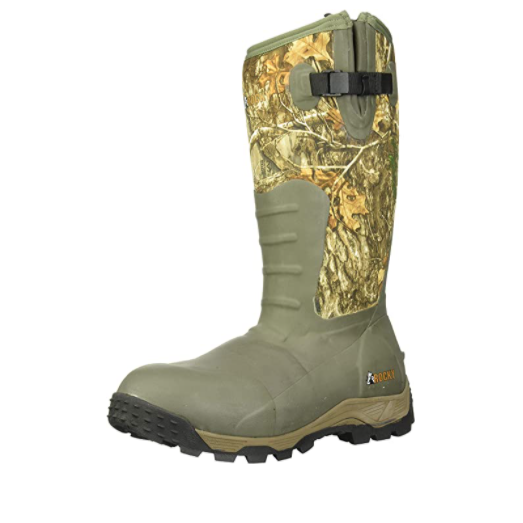
- Rubber sole
- Shaft measures approximately
- Imported
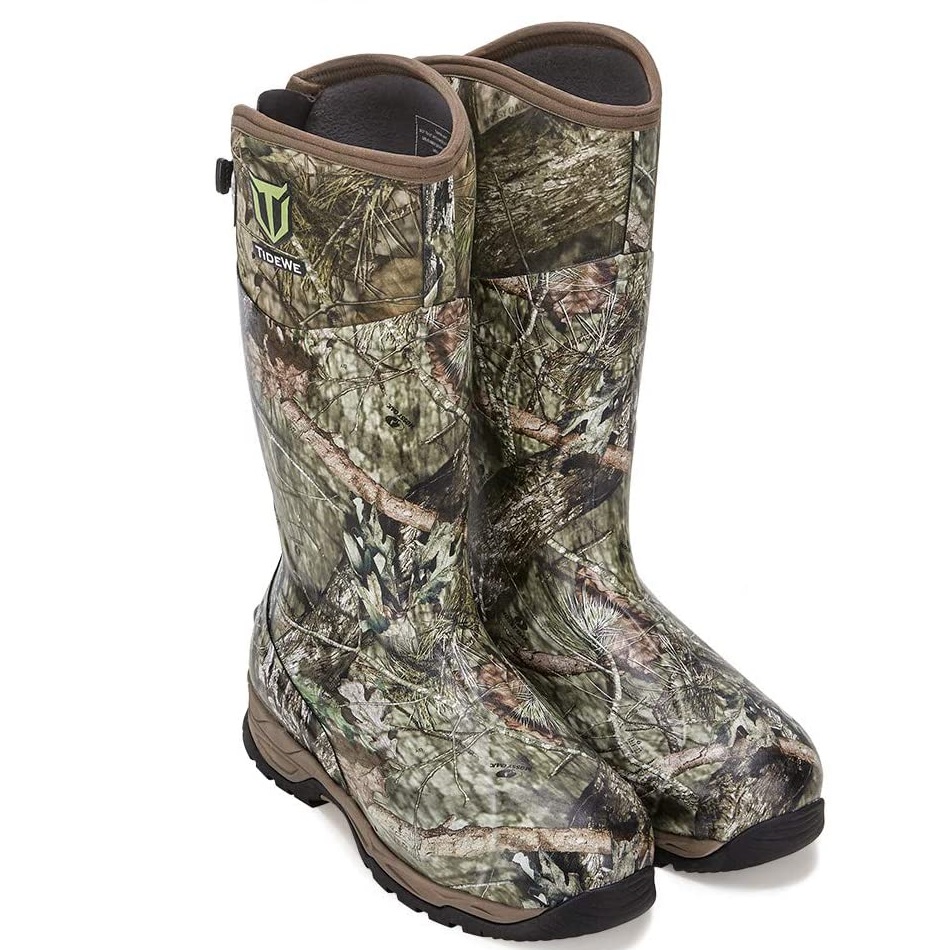
- 100% WATERPROOF
- Comfortable & Anti-Slip
- Color: Mossy Oak
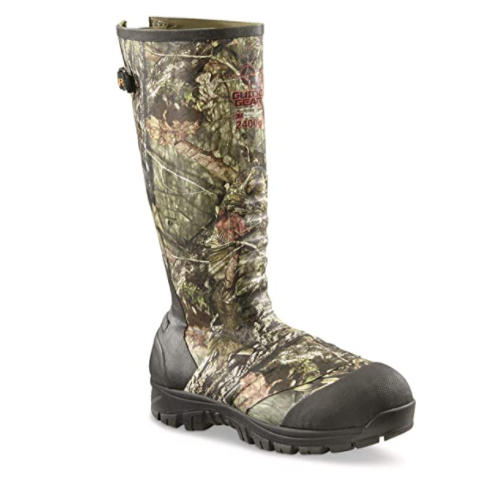
- Imported
- Rubber sole
- Color: Mossy Oak Break
Choose the Best Insulated Rubber Hunting Boot
Customer’s Choice: the Best Rated Insulated Rubber Hunting Boots
3 users answered this survey. Please help us improve this review!
Hunting can be a challenging and rewarding experience. Whether you are hunting for sport or for food, it is important to have the right gear to make the most of your outing. In this blog post, we will discuss the best insulated rubber hunting boots on the market today. We’ll take a look at some of the features that make these boots so popular with hunters, and we’ll also provide some tips on how to choose the right pair of boots for your needs. Stay safe and comfortable in the field this season with a good pair of insulated rubber hunting boots!
Table of Contents
HUNTSHIELD Neoprene Muck Boot
 This boot is just the thing for any man that wants comfort, warmth, and dryness in his life. Slip them on when heading outside to take in the winter wonderland or wear them at home with your favorite TV show.
This boot is just the thing for any man that wants comfort, warmth, and dryness in his life. Slip them on when heading outside to take in the winter wonderland or wear them at home with your favorite TV show.
The only way this neoprene muck boot can get any better is if you’re wearing it while kicking back by the fire with some hot cocoa in hand! With so many great qualities, not to mention they’re waterproof and smell-free soft fleece lining makes these boots irresistible!
Northikee Men’s Boots
 The Northikee boots are the perfect companion for your next outdoor excursion. Made of durable, lightweight materials, these boots feature a water-resistant flex-foam upper and neoprene lining that keeps your feet dry and comfortable in all conditions
The Northikee boots are the perfect companion for your next outdoor excursion. Made of durable, lightweight materials, these boots feature a water-resistant flex-foam upper and neoprene lining that keeps your feet dry and comfortable in all conditions
A reinforced Achilles, toe, and heel area ensures added durability and protection on challenging terrain. With a versatile design that allows for use in a variety of settings, the Northikee waterproof hiking boots are perfect for anyone who wants an all-in-one solution for their outdoor needs.
Rocky Men’s Sport Pro
 Rocky boots are made for the most extreme conditions and are perfect for anyone who wants to be prepared for anything.
Rocky boots are made for the most extreme conditions and are perfect for anyone who wants to be prepared for anything.
The aggressive multi-directional rubber outsole ensures a solid grip on any terrain, while the side zipper makes them easy to put on and take off. And with 1200 grams of 3M Thinsulate ultra insulation, your feet will stay warm even when the temperatures start to drop.
TIDEWE Rubber Hunting Boots
 When the rainy day is upon you, grab your TIDEWE Rubber Hunting Boots and explore with confidence.
When the rainy day is upon you, grab your TIDEWE Rubber Hunting Boots and explore with confidence.
Guide Gear Ankle Fit Hunting Boots
 With Guide Gear, you’ll never have to worry about your feet slipping and sliding again. Our rubber boots are designed with a snug fit that will keep you stable and comfortable no matter what the weather throws at you.
With Guide Gear, you’ll never have to worry about your feet slipping and sliding again. Our rubber boots are designed with a snug fit that will keep you stable and comfortable no matter what the weather throws at you.
And with 2400 grams of insulation, your feet will stay warm even in the most frigid temperatures. Plus, our expandable calf feature ensures a perfect fit on any leg size. So whether you’re big or tall, Guide Gear has the perfect pair of shoes for you!
Buyer’s Guide
Benefits of Insulated Rubber Hunting Boots
There are many benefits to wearing insulated rubber hunting boots. Let’s take a look at some of the benefits in this section.
- Lightweight – These boots are very lightweight, making them easy to wear all day long. This is important, as you’ll want to be comfortable when you’re out in the field.
- Warm – They will keep your feet warm even on the coldest days. This is important when you’re out in the field, as you could get frostbite if your feet aren’t warm enough.
- Durable – These boots are durable and can stand up to most conditions you’ll encounter while you’re out in the field. They won’t crack or tear easily, which means they will last a long time without needing replacement. There’s nothing worse than having to replace your boots after just one season because they tore or cracked.
- Waterproof – They are waterproof, making them great for wet weather conditions like snow and rain. This means you won’t have to worry about getting your feet wet when you’re out in the field.
- Affordable – These boots are affordable, making them a great option for those on a budget. You’ll be able to find a pair of boots that fit your needs and your budget.
There are many benefits to wearing insulated rubber hunting boots, but there is one downside.
– Insulated rubber hunting boots can be difficult to break in, which means they may not feel comfortable right away. If you’re looking for a boot that is easy on your feet from the first day you wear it, then insulated rubber might not be the best option for you.
Things to Consider When Choosing Insulated Rubber Hunting Boots
Insulated rubber boots for hunting are a must-have piece of gear for a successful season. They keep your feet warm and dry, no matter how cold or wet the conditions get. But with so many different options on the market, it can be tough to choose the right pair. Here are some things to consider when shopping for insulated rubber hunting boots:
Insulation
The very first thing you want to think about when looking for the best insulated rubber hunting boots is insulation. You need a boot that will keep your feet warm and comfortable, even when the weather is bad.
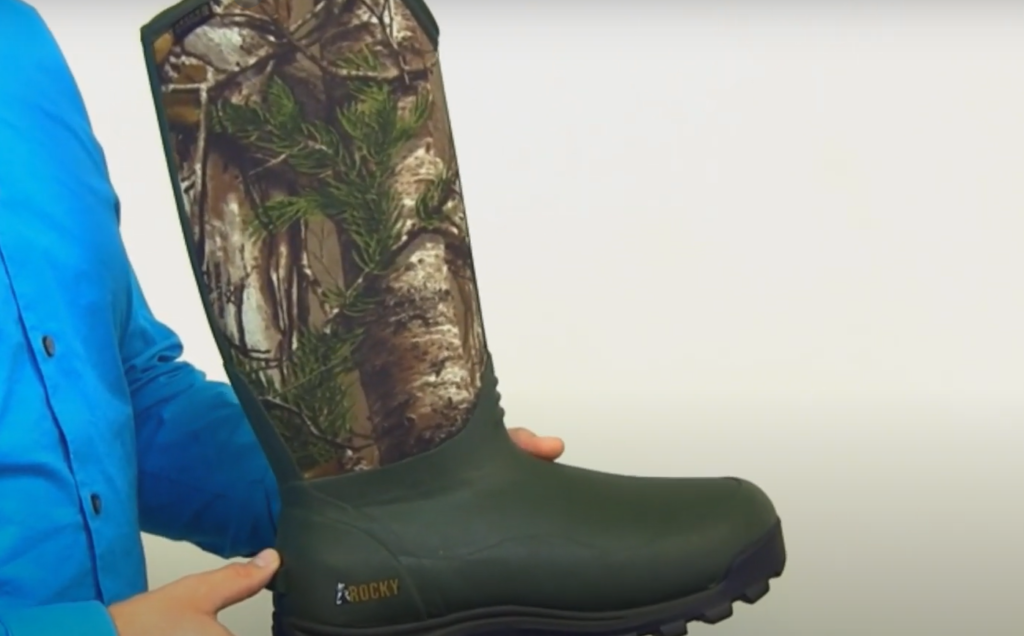
There are many different types of insulation on the market, so you need to find one that is right for your needs. The most common are:
- Gore-Tex Insulation: Gore-Tex is a company that has produced many different products, including boot insulations. They are most well known for their waterproofing technology which works by creating an impenetrable barrier between the inner layer of your boots and the outer environment. The main advantage of Gore-Tex insulation is that it will keep your feet warm and dry, even in the worst weather conditions. Moreover, it doesn’t allow for sweat to form inside the boot, so you will never have to worry about getting blisters. However, some people complain that Gore-Tex insulations can feel a bit stiff, so they aren’t always the best choice for people with sensitive feet.
- Thinsulate Insulation: Thinsulate is another popular insulation material that has been around since 1989. Unlike most other types of insulation materials, it is made from polypropylene fibers, which makes it stretchable, breathable, and comfortable to wear. The main advantage of Thinsulate insulation is that it can keep you warm in very cold temperatures (it’s able to insulate down to -30 degrees Fahrenheit). It is also water-resistant, so it will keep your feet dry even if you walk through a puddle or get caught in the rain.
- Fleece Lining: A fleeced lining is a type of insulation that is made from synthetic fibers. It is usually used in combination with other types of insulation, such as Thinsulate or Gore-Tex. The main advantage of a fleeced lining is that it traps air inside the fabric, which helps to keep your feet warm. Fleeced linings are also very soft and comfortable to wear, and they don’t itch like some other types of insulation materials can.
- Down: Down is a type of insulation that is made from the feathers of birds, usually ducks or geese. The main advantage of down insulation is that it can keep you warm even when wet (as long as it’s not sopping wet). It also tends to be very lightweight and easy to pack away if you need to take your boots off for a while. However, some people complain that down doesn’t always offer enough protection in extremely cold temperatures.
- Sheepskin: Sheepskin insulations are made from the wool of sheep. They are very soft and comfortable, but they don’t offer much warmth on their own since they don’t trap air inside like other types do (they should only be used as a lining). However, when used in combination with other types of insulation, they can be very effective at keeping your feet warm.
You can also find other types of insulation materials, such as felt and leather. However, these tend to be less effective at keeping your feet warm.
Keep in mind that some insulations are better than others when it comes to keeping you warm in cold temperatures.
Therefore, it’s important to choose an insulation material based on what kind of weather you will likely be hunting in. In addition, if you pick the wrong type of insulation or one that isn’t suited for the climate you plan on hunting in, then your feet might not stay very warm throughout the day (or worse yet…cold all over!).
Different people have different definitions of what “warm” is. Some people don’t like to feel too hot, whereas others prefer when their feet get a little sweaty from time to time.
Overall, the best type of insulation for hunting boots will depend on your personal preferences as well as the weather conditions you plan on facing while out in the field. If you are still unsure which one is right for you; then try them all out and see how they feel!
Thickness of Insulation
The second consideration you’ll want to take into account is the thickness of insulation. The thicker the insulation, the warmer your feet will be. However, if it’s too thick, you may find that your boots are difficult to move in.
The most common thickness for insulated rubber boots are:
- Light insulation: up to 400 grams
- Medium insulation: 400 to 800 grams
- Heavy insulation: more than 800 grams
Choose the thickness that will be most comfortable for you and ensure that your boots will keep you warm on those cold days in the field.

This factor affects the price of the boots. Boots with thicker insulation tend to cost more than those with thinner insulation. This is because they contain more material and will keep you warmer, which is beneficial for hunters who are often out in extremely cold conditions all day long.
Comfort and Fit
The next consideration is comfort and fit. It is important because you will be wearing your boots for hours at a time, and you do not want to have uncomfortable feet. Make sure that the boots fit comfortably on your foot as well as in your calf.
. You don’t want them to constrict your movement in any way. Additionally, the insulation and lining material should be soft and comfortable against your skin.
You may also want to consider boots with a built-in gaiter. This will help keep debris and moisture out of your boots, which will make them more comfortable to wear.
Choose the size of boot that fits you best. Do not choose a size that is too small or too large, as this will result in an uncomfortable fit.
It is important to choose the right size for your foot, but it is also essential that the boot fits comfortably against your calf as well. If you are not sure of how to measure yourself properly, ask a friend or family member to help you out.
Most rubber hunting boots are made with neoprene uppers that offer warmth without sacrificing the ability to breathe; however, some models feature GORE-TEX linings that are waterproof and windproof, making them ideal for extreme weather conditions.
You may also want to consider purchasing two pairs of boots, one size larger than your normal shoe size and one size smaller. This will give you some flexibility when it comes to wearing the boots in different temperatures or conditions.
It is always better to try on hunting boots before you purchase them. If possible, try on the boots with a thin pair of socks on as well as a thick pair so that you can determine how they feel against your feet when wet.
If the boots do not fit properly, they may cause blisters and another discomfort.
Fit also depends on the shape of your foot. Some people have wider feet, while others have narrower feet. It is important to find a boot that fits the widest part of your foot. This will help ensure a comfortable fit.
Traction
Another important factor to consider when choosing the best insulated rubber hunting boots for you is traction. You’ll want a pair of boots that provide good grip in slippery conditions, especially if you plan on doing any hiking or tracking.
Traction also becomes important when you’re walking through deep snow, as a good grip will help keep you from slipping and falling.

There are different patterns available, so choose the one that suits your needs best. It’s also a good idea to consider what type of terrain you’ll be hunting on before buying new boots; this will help ensure that they’re suitable for where you plan to go after leaving base camp each day.
The outsole material is also an important consideration. Rubber is often used for its durability, abrasion resistance, and flexibility, while lugged soles provide better traction than smooth ones do.
Durability
The next thing you need to look for in a rubber hunting boot is its durability. A sturdy pair should be able to withstand mud, water, and any other conditions that you may face on a hunt. To make sure the rubber material can handle all of these factors, check how thick it is. The thicker it is, the better protection your feet will have.
A good pair of rubber hunting boots should be able to withstand cold temperatures, wet conditions, and even some mud! If you’re going on a winter trip then make sure you pick up a pair that’s rated for sub-zero temperatures. Those with low-profile designs can also work well in warmer climes, as they won’t cause your feet to overheat.
You also need to pay attention to the sole of your rubber hunting boots. You want a pair that has an outsole with various layers, including an insole and midsole. These will provide excellent cushioning for your feet while keeping them warm and dry during any hunt you go on. The best way to check if these features are included is to look for the words “insulated” and “waterproof.”
Rubber is usually waterproof on its own, but you still need to be sure that your rubber hunting boots are marked as such. Otherwise, you could end up with cold feet halfway through the hunt because water has seeped into them from underneath or at the top where it meets your pants leg.
In addition to being insulated and waterproof, look for a pair of rubber hunting boots that have a steel shank. This will help provide support for your feet, so you can walk more easily without having pain at the end of the day from standing up all day long on uneven ground or in mud and water.
The last thing to look for when choosing durable rubber hunting boots is if they come with an extra pair of laces. This may seem like a small detail, but it can come in handy if you happen to lose one of your laces while out on a hunt.
FAQ
How should rubber hunting boots fit?
Rubber hunting boots should fit snugly, without being too tight. Make sure the boots are long enough to cover your ankles and calves, and that there is plenty of wiggle room for your toes.
What size rubber boot should I get?
Different brands have different sizes. Measure your feet and check the manufacturer’s size chart to determine what size will fit you best. Do not assume that a boot marked with a particular size will run true to shoe size; some manufacturers use letters, while others may use numbers or other designations for their sizing system.
Do you have to break in rubber boots?
Yes, rubber boots should be broken in before use. To help your new rubber hunting boots conform to the shape of your feet, wear them around the house for a few days. If they are too tight or uncomfortable, add an extra pair of socks and keep wearing them until they feel right.
What are some common problems with rubber hunting boots?
The most common problem with rubber hunting boots is that they can become too tight after being worn for a while. This can cause blisters and other foot injuries. It is important to make sure that the boots you purchase are comfortable from the start and will not become too tight over time.
Useful Video: Best Rubber Hunting Boots | Top 5 Insulated Rubber Hunting Boots
Final Thoughts
When looking for the best insulated rubber hunting boots, it’s important to consider all of the factors mentioned above in order to make sure you’re getting a pair that will suit your needs perfectly. By choosing wisely, you’ll be able to get through any hunting season in comfort and style.
The best insulated rubber boots will provide extra warmth when needed, while also offering protection against the elements. These are two things that can’t be ignored during a successful hunt. Keep these factors in mind before making your purchase so that you’ll know exactly what to look for when shopping online or in stores.
Make sure to read reviews of different rubber hunting boots before making your purchase, to get an idea of how well they perform in various conditions. Also, be sure to try on a few pairs before buying, to make sure they fit properly and provide adequate traction.
Remember: each hunter has his or her own unique needs so there isn’t a single perfect boot that can cater to everyone (if there were; we would be selling it!). You need to choose based on your specific situation and circumstances so take some time before making your purchase and read up on the different types of insulation materials that are available.
We hope this guide has been helpful and that you have a great hunting season!

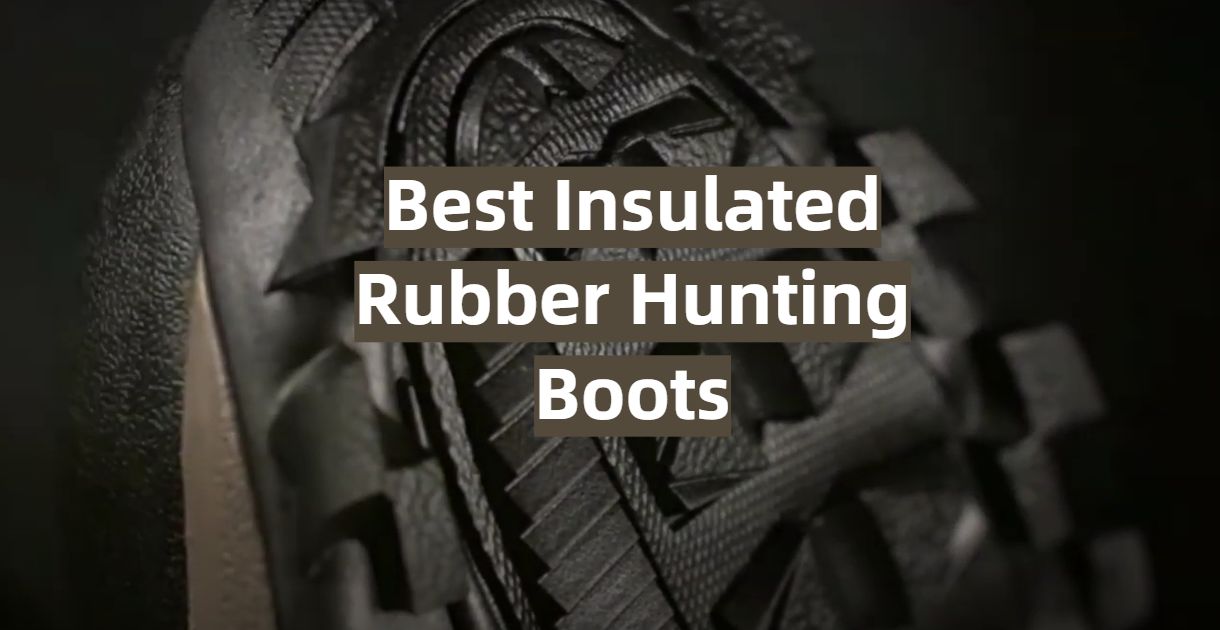





Leave a Reply